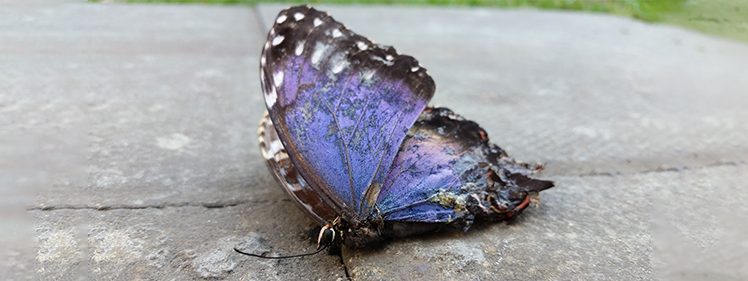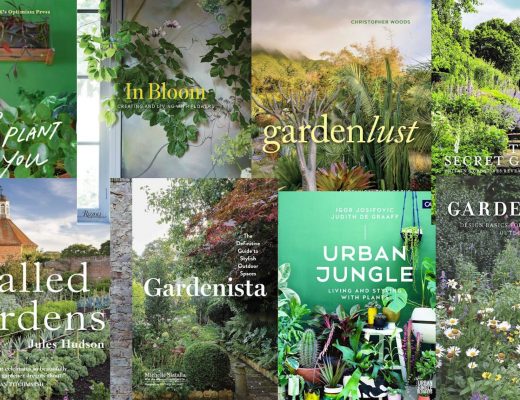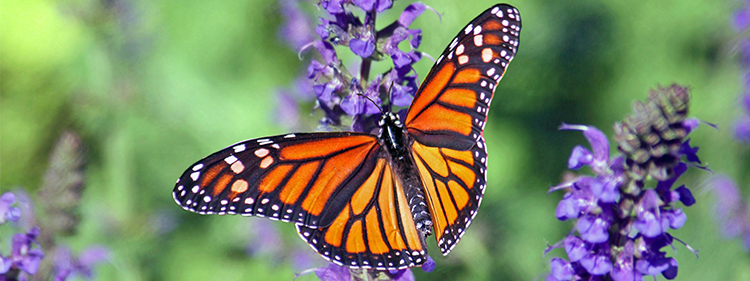
What are the most beautiful and delicate creatures on Earth? If you answered BUTTERFLIES without thinking twice, you’ve come to the right place! The best way to observe these colourful insects and to live in perfect harmony with them is to create a butterfly garden. If you’re new to the concept of butterfly gardens, worry not! We will share all of our butterfly garden knowledge with you and by the end of this guide, you’ll be an expert.
Not ready to build a butterfly garden just yet? That’s ok! We have plenty of tips and tricks on how to make your garden/yard more butterfly-friendly without a lot of effort. We will also introduce you to the most beautiful butterfly gardens in the world. So, without further delay, let’s dive deeper into this fascinating topic.
What is a Butterfly Garden
A butterfly garden is an ecosystem where butterflies have everything they need to thrive. Some people like to refer to butterfly gardens as butterfly habitats or butterfly sanctuaries. This can give us a little insight into a real problem that few of us are aware of – many species of butterfly are endangered and on the verge of extinction due to habitat degradation and loss, climate change, and pesticide use. The good news is you can help butterflies by welcoming them into your garden.
Butterfly gardens can accommodate a wide range of lepidopterans at all of their life stages: eggs, larvae, pupae, and of course, the majestic adults. Butterflies, skippers, and moths will gladly populate a garden habitat as long as their needs are met and different species have different needs.
For instance, the larvae of monarch butterflies only eat milkweeds, while the painted lady larvae are not as picky and can feed on hundreds of different plants. Adult butterflies, on the other hand, feed on nectar, tree sap, rotting fruit, and even carrion – surprising right? So, to encourage nectarivorous butterflies to populate a garden will require cultivating plants that have different colours, heights, and that bloom successively. This will ensure that the butterflies will always find nectar.
Benefits of Butterfly Gardens
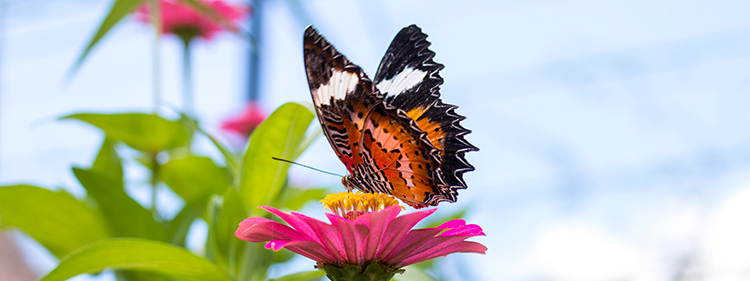
Butterfly gardens come with plenty of benefits – lepidopterans can turn a monotonous garden into one that’s filled with life and beauty. Furthermore, watching these mesmerizing creatures and their joyful dance is a relaxing and stress-relieving activity. But besides these very obvious positive aspects, there are a few great ones that you probably didn’t know about.
Butterflies have a positive impact on the environment
As you know, butterflies are pollinators and they help beneficial plants become fertilized and produce seeds, young plants, fruits, and carry on with their natural cycle. They also feed on weedy plants, preventing them from spreading, and are a nutritious food source for birds and reptiles. So, by creating a butterfly garden you help conserve these beautiful insects, but you also help other species and native plants.
Butterfly gardens encourage plant diversity and make cozy habitats for many beneficial insects
If you want to attract butterflies to your garden, you will need to plant a wide variety of plants. As a result, you will contribute to the cultivation and propagation of native plants, which will, in turn, attract other beneficial insects that are native to your area such as bees, beetles, and ladybugs.
Butterflies can tell you if the ecosystem is healthy
A fascinating thing about butterflies is that they act as tiny barometers. The presence of butterflies indicates that a certain habitat is healthy, while their absence indicates a lack of balance. Being delicate creatures, they can only survive if their needs are met. If something isn’t right with the surrounding environment, their numbers will drop quite quickly. When analyzing a habitat, scientists always check the population of butterflies first because they are a reliable indicator.
They are a source of joy and relaxation
Research has shown repeatedly that being in nature and watching wildlife has a huge positive impact on people’s wellbeing and mental health. Furthermore, being in nature can alleviate a wide range of mental health problems including anxiety and depression.
According to Sir David Attenborough, watching butterflies is a great activity since they provide us with a “precious breathing space away from the stresses and strains of modern life.” He also lets us in on the fact that throughout his career, he had the opportunity to witness spectacular things, but some of the most memorable ones happened when he took some time to watch the wildlife peacefully. He also mentions that watching a peacock butterfly or a red admiral flitting among the flowers in his garden brought him great joy. So, if you’re currently looking for a stress-relieving activity that will bring you peace of mind, butterfly watching is a great option.
Butterfly gardens make great projects for children
Children love being outdoors and they need to learn how to interact with nature and how to protect it. They will enjoy getting their hands dirty, planting flowers, and watching the butterflies’ circle of life. Starting a butterfly garden with children is a great project that doesn’t require a lot of resources, just time, patience, and creativity. According to Run Wild My Child, butterfly gardens come in all shapes and sizes and they can even fit in pots and hanging baskets on your balcony.
Interesting Facts About Butterflies
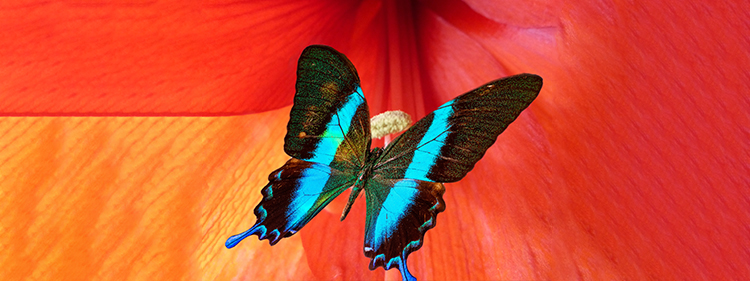
Fact 1
- The body of butterflies consists of three main parts: the head, the thorax, and the abdomen. They have three pairs of legs (forelegs, middle legs, and hind legs) and they have a hard external skeleton, thus being classified as insects.
Fact 2
- Butterflies are members of the Lepidoptera insect order and are closely related to skippers and moths. The easiest way to tell these insects apart is by looking at their antennae. Moths have distinguishable feathery antennae, butterflies have clubbed antennae, and skippers also have clubbed antennae, which end in a small hook.
Fact 3
- If you look at butterfly wings under a microscope, you’ll notice that they are covered in tiny scales that are responsible for the unique colouration. The pigments in the scales and the structure of the wings’ surface give butterflies their beautiful colours. These scales can also have other functions such as producing a specific scent during the mating season, absorbing and reflecting light, and allowing butterflies to escape predators.
Fact 4
- The life cycle of butterflies consists of four stages – egg, caterpillar, chrysalis, and adult. In a butterfly garden, you’ll witness all of these stages and you’ll be able to see the metamorphosis process up close.
Fact 5
- The majority of butterflies spend their winters in the same place where they spent their summer. Others, however, are migratory and will seek a warmer environment. One perfect example is the Monarch butterfly that can travel 3000 miles (4800 km) to winter in the Southern part of the United States.
Fact 6
- Over the past few decades, butterfly populations have declined due to loss of habitat and native vegetation. Deforestation and land development have many negative consequences, and this is one of them. The destruction of native plants and the introduction of non-native, and sometimes invasive, species prevent butterflies from completing their life cycle. Luckily, gardeners can make a difference by planting vegetation that’s rich in nectar and that’s attractive to butterflies.
Fact 7
- Experienced butterfly-watchers analyze the butterfly’s flight patterns to identify the species. Some species of butterflies are gracious and glide elegantly with few wing flaps, while others are quick and dart all over the place.
Fact 8
- Butterflies are ectotherms so they love to sunbathe. To maintain their body heat at an ideal level, they need an external source, so they will spend a lot of time warming up before they start flying, especially on cold days.
Fact 9
- When mating, butterflies seem to dance around one another in the air. After they had a chance to check each other out, they clasp their abdomens together and can stay like that for 12 hours. This process is so long that you can even see two butterflies stuck together flitting from flower to flower.
Fact 10
- Were you wondering how butterflies sleep? Well, they don’t actually sleep. Instead, they land in a safe place and rest with their wings closed.
How to Start a Butterfly Garden
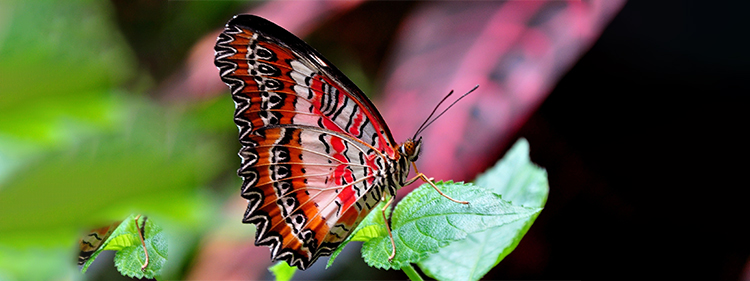
Setting up a butterfly garden might seem like a challenge, but we’re here to guide you through the whole process. The smaller your butterfly garden, the easier it will be. As mentioned before, a butterfly garden can be started even on a small balcony, in containers, and hanging baskets. But if you want to create a comfortable sanctuary that will attract beautiful butterflies and other insects, why not think big?
Although it is a lot of fun, digging and planting without a proper strategy is not the best option when it comes to creating a butterfly garden. To make sure that everything goes well, follow these easy steps:
Step 1 – Research
All projects need to start with plenty of research and butterfly gardens are no exception. It’s important to find out what the native butterflies of your area are and which ones you would like to attract. After you’ve made a butterfly list, you can start looking into the flowers and plants that they like to feed on. The plants that you choose should also provide them with shelter and with a place to lay their eggs. Like the butterflies, the plants should also be native to your area.
In Australia, there are approximately 400 species of butterflies, and many of them are currently suffering due to habitat loss and the disappearance of native plants. The great majority of Aussie butterflies thrive in tropical regions, but every area of the country has its own native butterflies, moths, and other Lepidoptera and many of them are quite easy to attract.
Step 2 – Butterfly Garden Ground-truthing
This step is very important, so we don’t recommend skipping it. Before you start buying plants, you need to do some “ground-truthing”. This process consists of surveying your property, checking the available space, and assessing the resources available. Here are a few essential aspects that you need to consider:
Are there any south-facing slopes in your garden? Butterflies love south-facing slopes because they are ectothermic insects that need plenty of sunlight. Keep in mind though, butterflies in the Southern Hemisphere need a north-facing slopes.
Are there any natural windbreaks on your property? Exposed, windy locations can deter butterflies. If there aren’t any natural windbreaks in your garden such as shrubs and small trees, you’re going to have to plant some.
What species of plants do you already have in your garden? Take a close look at the plants and shrubs that you already own. Some might be beneficial to butterflies, and others might not. Make sure you only keep the “good” ones.
Step 3 – Butterfly-friendly Plants Selection
Although we love all flowers as long as they have attractive foliage and produce beautiful flowers, butterflies might be pickier. Many different plants attract lepidopterans, but it’s important to know that some will be more successful than others. To encourage butterflies to spend a lot of time in your garden, you need to select plants that will provide them with food, egg laying-places, and shelter.
To make things a bit easier, we recommend choosing plants that belong to two main groups: caterpillar food plants and nectar plants.
Caterpillar Food Plants

You can’t attract butterflies without accommodating caterpillars. Providing larval butterflies with nutritious plants is just as important as feeding them when they become colourful and elegant. Caterpillar food plants also serve as egg-laying grounds for butterflies, so finding the right ones is quite important. As a butterfly-gardener enthusiast, it’s important to remember that caterpillars won’t feed on any plants. In fact, they are just as picky as adult butterflies. To find out what type of caterpillar food plants you need to plant in your garden, you first need to find out what native species of butterflies you’re planning to attract.
Caterpillars that are native to Australia feed on wattle leaves, gum leaves (Eucalyptus), grass, lichen, and herbaceous plant leaves. If you live in an urban area, you’ve probably seen Monarch butterflies more than once. These majestic butterflies are not native to the Australian continent but they arrived here in 1871 when their host plant – Milkweed. Milkweed (or swan plant) came to Australia and New Zealand from Africa. The species found in Australia is different than that Milkweed found native to North America. The North American species are in the Asclepias family. So, to fill your garden with beautiful Monarch butterflies, make sure you plant plenty of Milkweed.
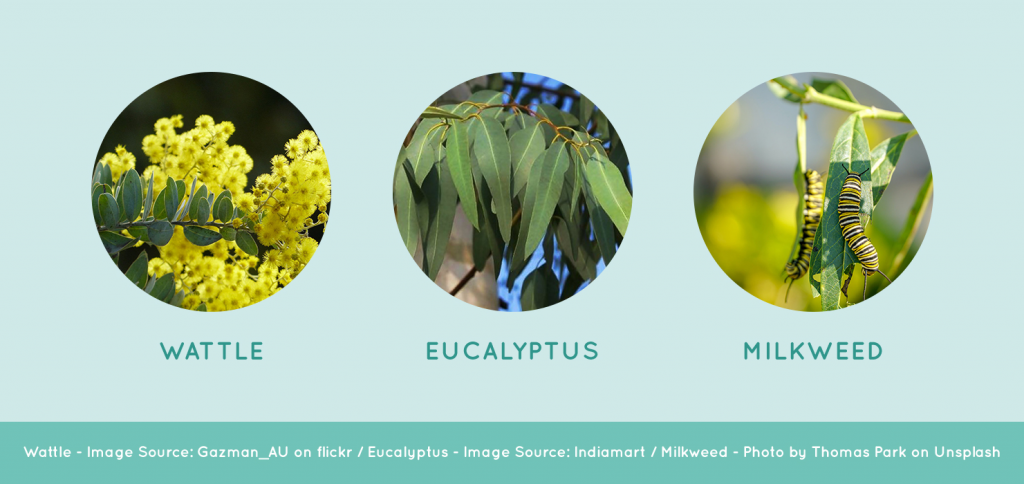
According to Sustainable Gardening Australia, other caterpillar-friendly plants include:
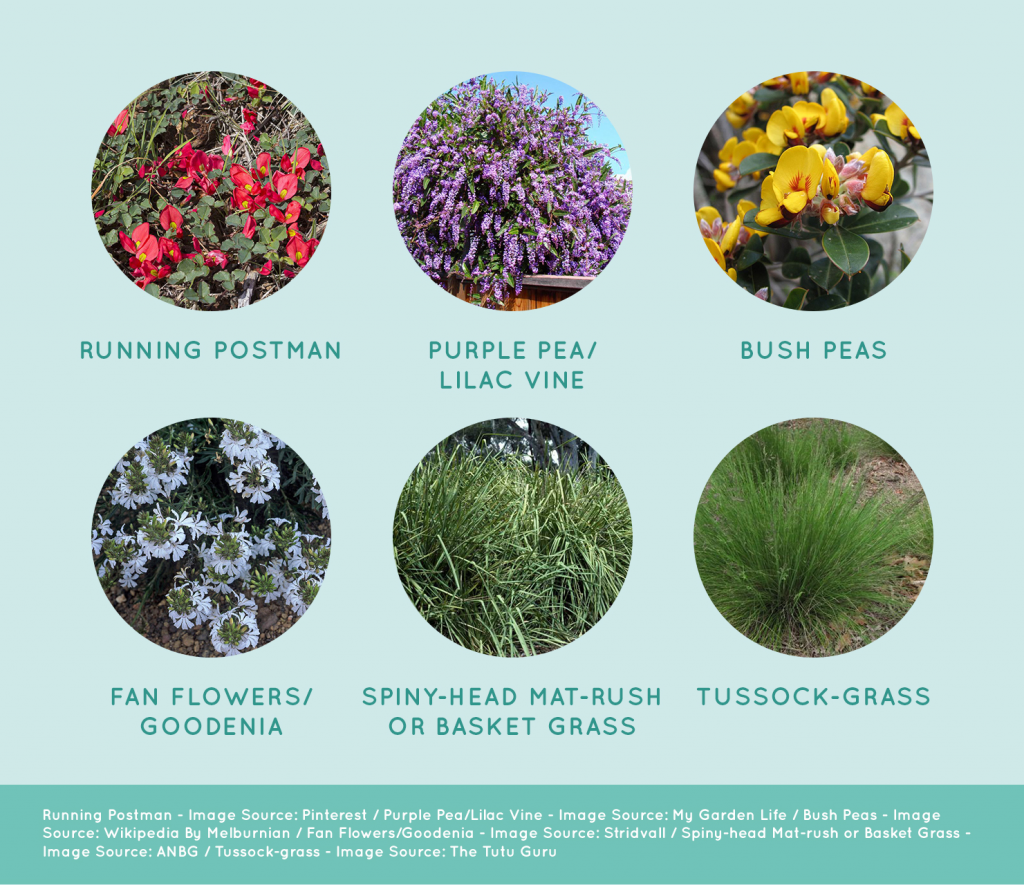
Another attractive plant family for caterpillars and butterflies is Mistletoe. So, if you find it growing on your trees, don’t reject it for its parasitic habits. Instead, let it grow so it can attract beautiful butterflies.
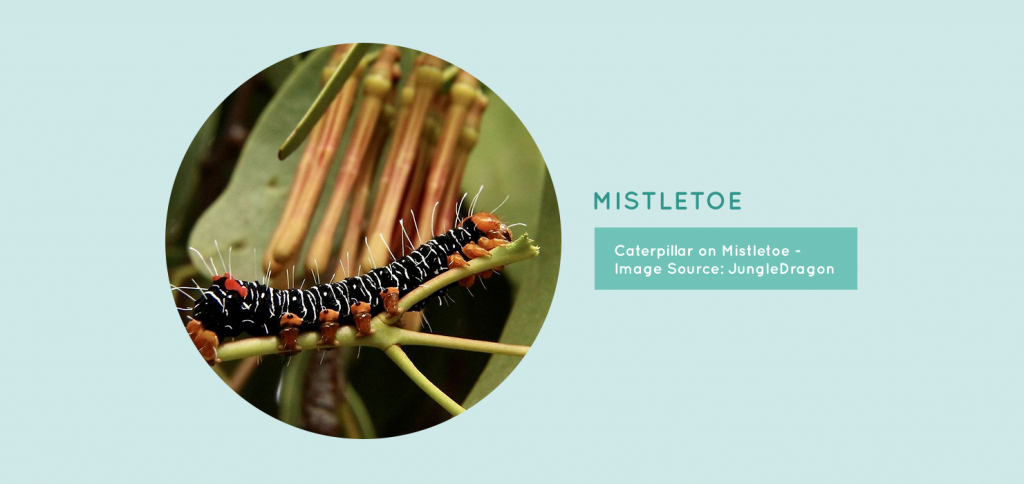
Host plants
Like all living creatures, butterflies also need host plants that provide safe places for them to lay their eggs. If you’ve already added caterpillar food to your list, then this will be easy because butterflies lay their eggs on the same plants that caterpillars like to eat. The only purpose of a caterpillar is to feed and to grow, so they need plenty of delicious plants. However, some caterpillars can be picky. As mentioned above, Monarch caterpillars only eat and lay their eggs on Milkweed (Asclepias tuberosa). Tiger and Black Swallowtail caterpillars stick to plants that belong to the carrot family, while Gulf Fritillary will visit your garden only if you plant Passiflora (Passion Flower Vine).
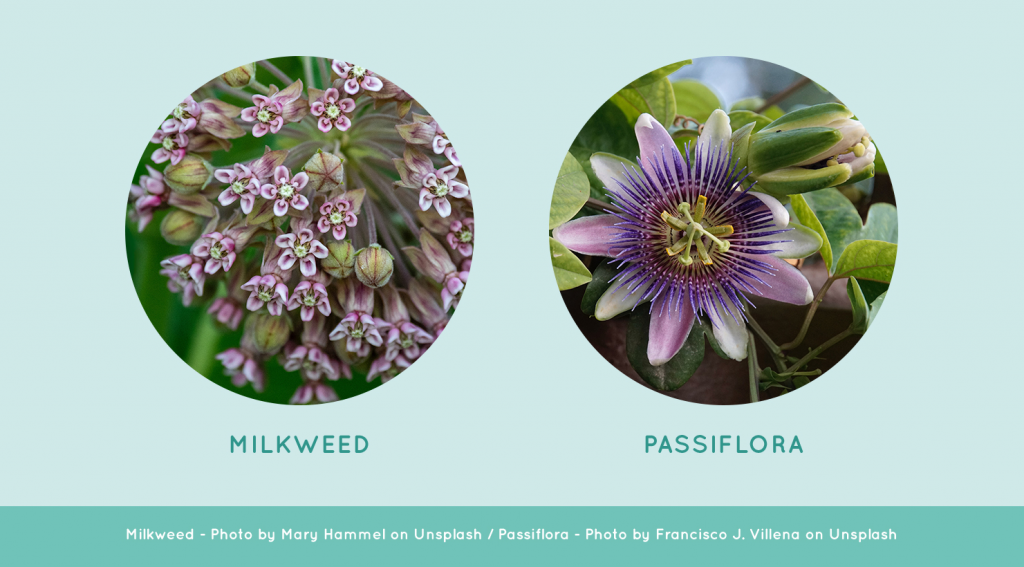
Nectar Plants
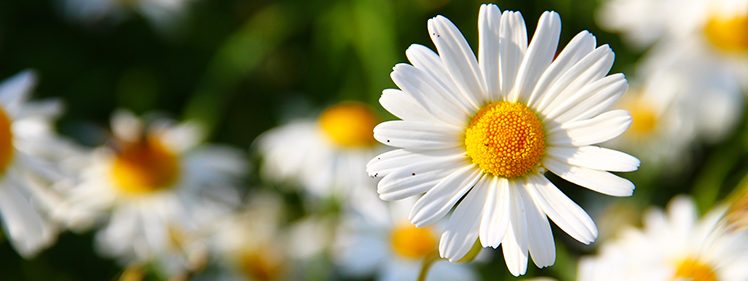
If you’re an experienced gardener, you’ve surely seen plenty of plants labelled ‘butterfly-friendly’. They are pretty ok, to begin with as their labels are pretty accurate. All nectar plants will attract butterflies, but it is important to remember that they might not feed caterpillars or provide shelter for egg-laying. It is always a safe bet to choose nectar-rich plants that are also caterpillar food plants such as:
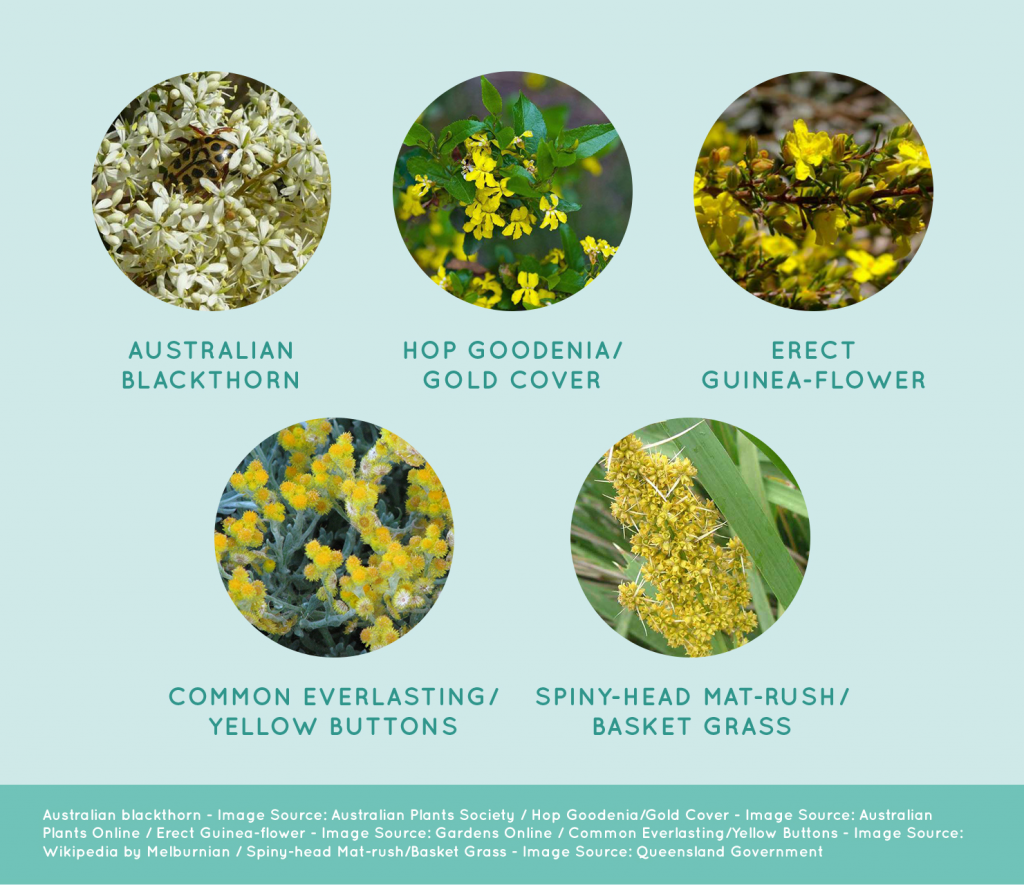
Other plants that produce plenty of nectar, but are not caterpillar food include:

Tips
- Find out what butterflies are native to your region and choose plants accordingly. To find out what butterflies will visit your garden, you can visit a local butterfly garden and talk to other butterfly garden-enthusiasts. Once you’ve compiled a list of the most common local butterflies, do some research into their favourite nectar-producing plants and what they like to feed on as caterpillars.
- Lepidopterans have a liquid or semi-liquid diet. They come for the sweet nectar in flowers, but they are more likely to stay if they find some delicious gooey food such as rotten fruit (think overripe apples, pears, bananas, and even orange slices). If you want to make your garden super friendly for butterflies, you can lure them with feeding stations. Some people even use fruit juice and sports drinks, and that works too. But we recommend avoiding anything that has artificial sweeteners.
- Plant many different host plants, nectar-rich plants, and caterpillar food plants. This is a great strategy to attract all sorts of lepidopterans. Butterflies will surely visit your garden if they can find everything they need. Plant diversity is key if you want to make your garden butterfly-friendly. Make sure your garden has a little bit of everything from trees and tall shrubs to perennials, vines, and grass. By choosing plants that have different heights, colours, shapes, and very importantly, different bloom times, you increase your chances of attracting many different species of lepidopterans.
Step 4 – Shelter, Water, Sun
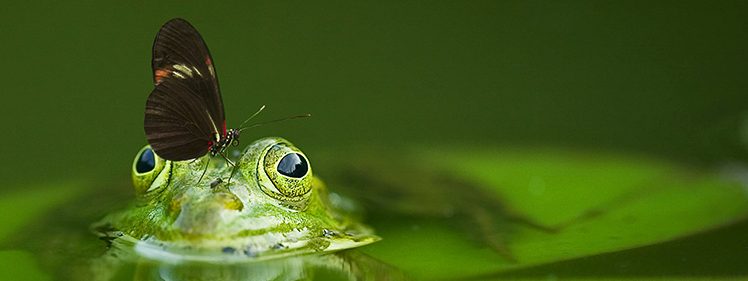
There are another three important things that shouldn’t be missing from your garden if you want to attract butterflies – shelter, water, and sun. Let’s discuss each of these elements and their roles in butterfly gardening.
Shelter
Butterflies prefer gardens that shelter them and that protect them from the wind. When the weather is bad, butterflies look for shelter into tall grasses, on the underside of leaves, into cracks and crevices, and in trees. They also love it when they have plenty of cozy spaces to attach their chrysalis while in caterpillar form. Caterpillars seek shelter in low growing plants such as ferns and grasses. Butterflies, on the other hand, need trees, shrubs, and even rock piles that are placed in strategic locations to shelter them from bad weather.
Trees and shrubs will also protect butterflies from predators by providing them with plenty of roosting and hiding spots.
Tip
Butterfly houses are not very effective. Although they look attractive and are available on different websites and in stores, butterfly gardening experts warn that they are more likely to become wasp nests. According to Jill Staake, of Birds and Blooms, it’s easier and more affordable to just stick to native shrubs and grasses.
Water
As mentioned above, butterflies get all their liquids from flowers, fruit, and tree sap so they don’t need water in the traditional sense. Birdbaths and ponds are not particularly useful when it comes to attracting butterflies. Water that is dripping or spraying is dangerous and can damage their delicate wings. But, surprisingly enough, butterflies are big fans of mud puddles where they can get minerals and moisture, and even socialization. According to Jill Spencer, of Dengarden, ‘butterflies congregate on shallow water’ and that’s a ‘beautiful thing to see’.
So, if you want to create puddlers for butterflies and host ‘butterfly parties’, you can use shallow plates and bowls. Bury them in the ground while making sure that the lip of the container is at ground level. Add sand, arrange a few rocks, pieces of wood, or anything that would make a good landing spot for butterflies. Add water regularly to keep the sand wet and wait for lepidopterans to discover the place. It is recommended to place the puddler in a sunny location, near butterfly-friendly flowers, where butterflies are protected from strong winds.
Sun
Another essential component of any butterfly garden is the sun. Being cold-blooded insects, butterflies need plenty of sunlight. They rely on the surrounding environment to warm themselves up before they can fly. So, when creating a butterfly-friendly eco-system, make sure to include sunny spots such as exposed soil, large rocks, pavement, and other surfaces that warm up quickly. Furthermore, the majority of plants that butterflies feed on need around 8 hours of sunlight to grow healthy and happy and to bloom and produce nectar. So, your garden should get a minimum of 6 hours of direct sunlight per day.
Most Common Garden Butterflies of Australia
Australian Painted Lady
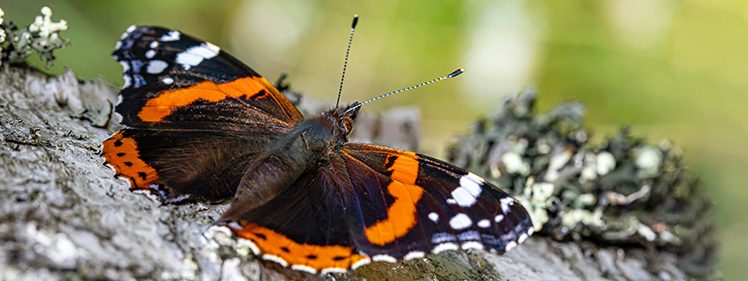
This butterfly is quite common in Australia and New Zealand. These warm-coloured butterflies migrate south during spring, reaching Queensland and New South Wales. Luckily for us, urbanization and invasive plants haven’t affected the population of the Australian Painted Lady, so it will be quite easy to spot them and to lure them to your garden.
In terms of food, these butterflies love daisies and pretty much any Australian native plants. They also accept some non-native species of plants like lavender, scotch thistle, and capeweed. Caterpillar food for Australian Painted Lady includes Capeweed and Cudweed. Scotch Thistle, Chrysanthemums. In terms of host plants, these butterflies are not as picky, laying their eggs on many different plants including Chrysanthemums and Scotch Thistle.
Red-spotted Jezebel

These colourful butterflies are endemic to Australia and can be found mostly in the southern regions, in Queensland, Victoria, New South Wales, etc. According to Atlas of Living Australia, Red-spotted Jezebel butterflies are more common in summer and they breed on mistletoe vines, where they lay their eggs in clusters. The caterpillars feed on Amyema, Santalum, and Exocarpos plants, and the adults feed on nectar.
The Common Brown
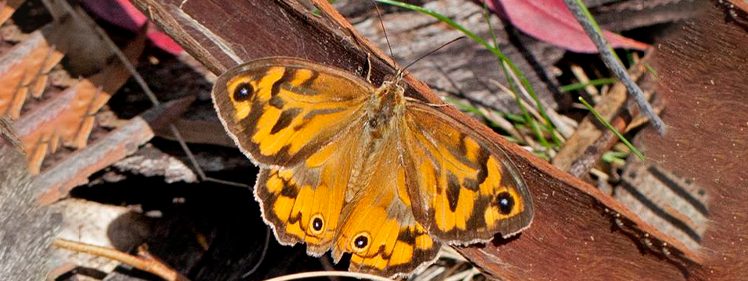
This lovely warm-colored butterfly is endemic to the Canberra area, New-South Wales, Victoria, Queensland, Tasmania, and Western Australia. It thrives in woodlands, forests, and urban areas, where it is active during the warm months of spring and summer. Common Brown Butterflies mate in October and November and the males die soon after. The females live for a few more months until they lay their eggs (in March). The caterpillars start by feeding on soft grasses, and as they mature, they diversify their diet. The common butterfly feeds on native and non-native grasses, which makes them perfect residents of the suburbs.
The Yellow Admiral
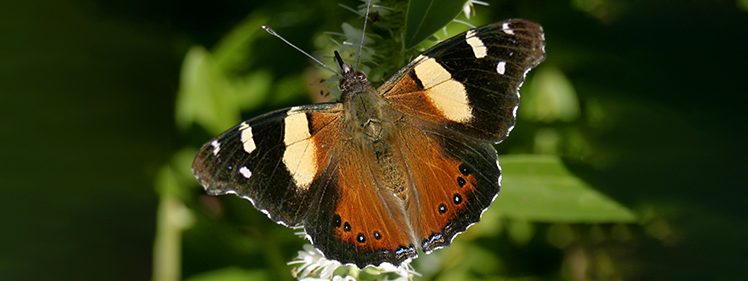
By I, Tony Wills, CC BY-SA 3.0, https://commons.wikimedia.org/w/index.php?curid=7296494
Also known as the Australian Admiral, this beauty is native to Australia, New Zealand, Norfolk Islands, and Lord Howe Island. The Yellow Admiral is a medium-sized butterfly that is happy to populate gardens with plenty of nettles such as Urtica urens and Urtica incisa. This butterfly will lay eggs on the leaves of the nettles, which they will later consume when they grow into caterpillars. The Yellow Admiral caterpillars can be brown, yellow-green, black, or grey with lines and spots. The adults feed on nectar, and tree sap, so you’ll need plenty of flowering plants and trees to convince them to call your garden home.
Saltbush Blue
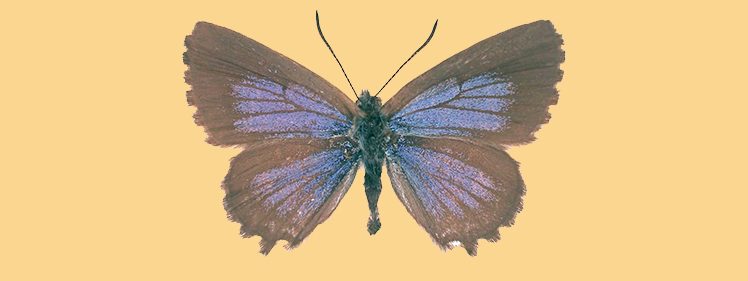
The Saltbush Blue, also known as Checkered Blue, is a small, but attractive butterfly that blends easily into the surrounding vegetation. It thrives around flowering plants that belong to the Chenopodioideae family and it is a common sight in the suburbs being widespread and adaptable. Saltbush Blue caterpillars feed on the flowers and soft parts of the Saltbush. Attracting these butterflies to your urban garden is quite easy, as long as you provide them with plenty of Saltbush shrubs.
You can find more species of butterflies here and here.
Butterfly Garden Designs
Butterfly Garden Design by Suzanne DeJohn of Gardeners.com

Plants:
A: Kobold blazing star (1 plant)
B: Purple Dome aster (2 plants)
C: Butterfly Weed a.k.a. orange milkweed (2 plants)
D: Magnus purple coneflower (2 plants)
E: Profusion Orange zinnia (2 plants)
F: Peach Melba nasturtium (2 plants)
G: Snow Princess sweet alyssum (2 plants)
Suzanne’s butterfly garden is designed to attract lepidopterans throughout the season. The leaves of the orange Milkweed plant will provide nutritious food for monarch butterfly caterpillars. In summer, the other plants will bloom sporadically and you’ll enjoy a continuous spectacle of blooms in a wide range of colours. During the autumn months, the fall-blooming plants will feed adult monarch butterflies and give them the strength to migrate.
For this butterfly garden, Suzanne has chosen perennial varieties that grow compactly. This is a great idea because it prevents the plants from becoming overcrowded once they reach their mature sizes. If you live in an area where certain plants are not available, it is recommended to replace them with native perennials.
Tip: Suzanne DeJohn’s butterfly garden has a hexagonal shape inspired by honeycomb cells. These shapes are very useful for butterfly gardening because they are modular and can be configured in many different ways. By tucking them close together, you can obtain a neat and beautiful garden bed.
Butterfly Garden Design by Viveka Neveln of Better Homes and Gardens
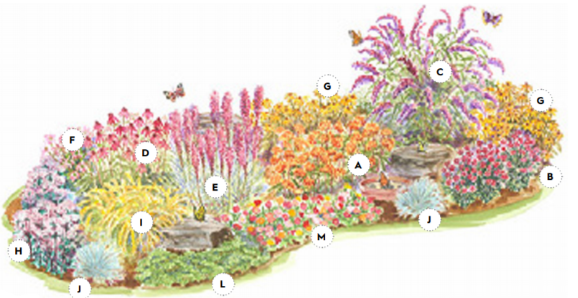

Plants:
A: Butterfly Weed (2 plants)
B: Purple Dome Aster (3 plants)
C: Nanho Purple Butterfly Bush (1 plant)
D: Purple Coneflower (4 plants)
E: Spike Gayfeather (4 plants)
F: Petite Delight Bee Balm (3 plants)
G: Black-eyed Susan (6 plants)
H: Matrona Stonecrops (2 plants)
I: Golden Fleece (2 plants)
J: Elijah Blue Fescue (2 plants)
K: Sweet Alyssum (12 plants)
L: Parsley (6 plants)
M: Dwarf Zinnia (24 plants)
You can find Viveka Neveln’s complete butterfly garden plan here
Tip: There are many great butterfly garden plans out there, and you might not be able to find the recommended plants. Don’t worry about that! Replace them with similar plants that are native to your area and easier to find. However, be extra careful when it comes to aggressive plants and avoid invasive species. For instance, in certain areas, Butterfly Bush is considered a problematic plant. You can replace it with Bluebeard plants that have nectar-rich flowers that will also attract pollinators.
Don’t Use Chemicals
Chemicals are still widely used in gardens, especially when people want to get rid of pests and unwelcome insects. If you want to create a butterfly sanctuary, you need to cherish biodiversity. This means avoiding chemicals. Cockroaches, spiders, ants, and even mosquitoes have a role in a healthy ecosystem, and eliminating them would result in a ‘butterfly effect’.
A small intervention on your part might have a devastating impact on your garden’s inhabitants. Did you know that pesticides will also affect a lot of non-target species? According to Wikipedia, ‘over 98% of sprayed insecticides and 95% of herbicides reach a destination other than their target species, including non-target species, air, water, bottom sediments, and food.’ So, spraying your plants with pesticides or sprinkling roach control granules might affect other living things and damage the ecosystem.
Famous Butterfly Gardens
Our guide wouldn’t be complete without a list of beautiful butterfly gardens that are worth visiting. We’ve included butterfly sanctuaries from all over the world, but there are plenty more that we missed. So, make sure you do extra research because there are hundreds if not thousands of butterfly gardens that are worth your time.
Melbourne Zoo’s Butterfly House

Melbourne’s Butterfly House opened in 1985 and it has never ceased to amaze visitors ever since. Housing more than 600 different types of butterflies that belong to 13 distinctive tropical species, this place leaves an impression and manages to create a connection between visitors and colourful ectotherms. Tropical butterflies thrive in the ecosystem created in the Butterfly House because all of their needs are met. They get to enjoy a steady temperature of 27°C degrees year-round. According to visitors, this lovely place is a must stop and a delightful experience for both children and adults.
The Imperial Butterfly House Vienna – Schmetterlinghaus

Situated right in the heart of the city, this Butterfly House accommodates over 400 different butterflies that roam freely. The Schmetterlinghaus is a tropical oasis created in stunning Art Nouveau palm houses where you’ll find peace and relaxation. The butterflies can be admired year-round and in an environment that’s designed to be as true to nature as possible. So, if you are visiting Vienna, make sure you check out this amazing place. You will not regret it!
Audubon Butterfly Garden and Insectarium

It is important to mention right off the bat that, at the moment, Audubon Butterfly Garden and Insectarium is going through a rough patch. Because of the Coronavirus Pandemic and a crippling drop in tourism, the famous New Orleans attraction was forced to take drastic measures to cut costs and ensure survival. The most important measure consists of moving the exhibits from the previous location to a new one. So, the insectarium exhibits and the Japanese-style butterfly garden that we are all extremely fond of, are moving to the Audubon Aquarium of the Americas. So, before you add this amazing place to your itinerary, make sure you check whether the new location has opened its gates to the public.
Fort Myers Butterfly Estates

This Butterfly House belongs to the Florida Native Butterfly Society and it focuses on the protection and preservation of Florida-native butterflies. Visiting this place is an educational experience as visitors get to learn about the life cycles of butterflies and can witness their release. If you want to watch Florida-native butterflies in their natural habitat, including the majestic Monarch butterflies, this is the perfect place to visit. While you’re there, you’ll also get to enjoy a nice coffee shop, an art gallery, and plenty of places where you can just sit and relax.
Dubai Butterfly Garden

The Dubai Butterfly Park is a new addition to Dubai Miracle Garden – and according to their website, it is the world’s largest butterfly garden, featuring 26 different kinds of butterflies and over 15,000 specimens. This butterfly garden is an indoor one and it is quite large with 10 domes filled with lepidopterans. The garden has plenty of assistants that can make your experience educative and fun and they will help you interact with the butterflies, take beautiful pictures, and understand their life cycle.
Singapore Changi Airport Butterfly Garden

This butterfly garden is located in a rather unusual and unexpected place – in Singapore Changi Airport. But we shouldn’t be so surprised, since Changi Airport is also home to orchid gardens, cactus gardens, a swimming pool, a cinema, and plenty of other relaxing spaces. So, if you ever find yourself travelling through Changi Airport, don’t miss the Butterfly Garden. It features 40 different species and no less than 1000 Malaysian-native butterflies. The butterfly garden is quite impressive as it houses a lot of greenery, tropical flowers, and even a six-meter high waterfall.
Bronx Zoo Butterfly Garden

Home to the beloved Monarch butterfly, the Butterfly Garden of Bronx Zoo can be visited throughout the warm season from April to October. During your visit to Bronx Zoo Butterfly Garden, you’ll get to admire over 12 different species of butterflies. According to their website, this exhibit is interactive and it is wheelchair accessible.
Niagara Falls Butterfly Conservatory

This Butterfly Garden is part of the Niagara Parks Botanical Gardens. Opened in 1996, the garden houses 45 different species of lepidopterans and no less than 2000 butterflies. Many of them are tropical and were brought from Australia, South America, and South Asia. But don’t worry about the fact that the butterflies are not native to the area. They get to enjoy proper tropical conditions and their favourite plants. Some of the most spectacular butterflies that you’ll have the opportunity to see at Niagara Falls Butterfly Conservatory are the Gulf Fritillary, the Banded Orange, the Common Mormon, and the Sara Longwing.
Butterfly World in Coconut Creek Florida

Opened in 1988, this is the oldest and the largest butterfly garden in the United States. Founded by Ronald Boeder who was inspired by London Butterfly House, which is now closed, Butterfly World is home to a wide range of lepidopterans. On the premises, you’ll find a research centre, a butterfly farm, hummingbird aviaries, botanical gardens, and of course, plenty of free-flight butterfly houses. If you visit Coconut Creek’s Butterfly World, you’ll have the opportunity to learn about the endangered Schaus Swallowtail and to gaze at 150 different species of lepidopterans.
Best Butterfly Gardening Resources
Butterfly Gardening Books

- ‘Gardening for Butterflies: How You Can Attract and Protect Beautiful, Beneficial Insects’ by The Xerces Society
- ‘Gardening for Birds, Butterflies, and Bees: Everything you need to Know to Create a wildlife Habitat in your Backyard’ by Editors at Birds and Blooms
- ‘Butterfly Gardening: Creating a Butterfly Haven in Your Garden’ by Thomas C. Emmel
- ‘Butterfly Gardening: The North American Butterfly Association Guide’ by Jane Hurwitz
- ‘Raising Butterflies in the Garden’ by Brenda Dziedzic
- ‘Planting for Butterflies: The Grower’s Guide to Creating a Flutter’ by Jane Moore
- Ultimate Blooms, Butterflies & Birds by Garden Gate Magazine
- Butterfly Gardening with Native Plants: How to Attract and Identify Butterflies by Christopher Kline
YouTube Channels on this topic
- The Butterfly Farmer
- Iowa Butterfly Garden
- Lukas Nursery and Butterfly Encounter
- Dave the Butterfly Guy
- Butterfly Gardening Inspiration
Butterfly Clubs and societies
- Saving the Butterfly Conservation
- North American Butterfly Association
- Xerces Society for Invertebrate Conservation
- International Butterfly Breeders Association


